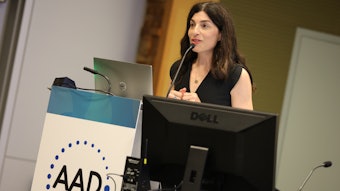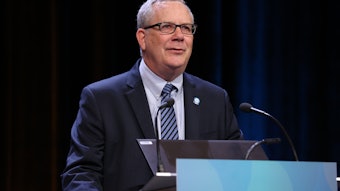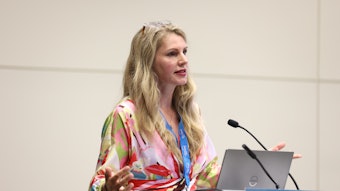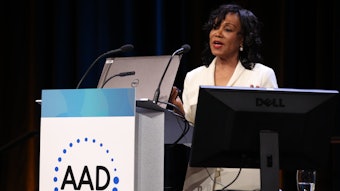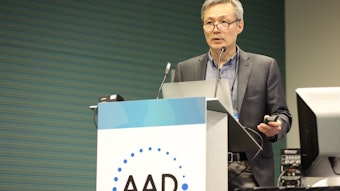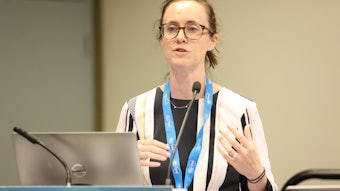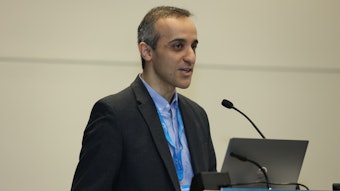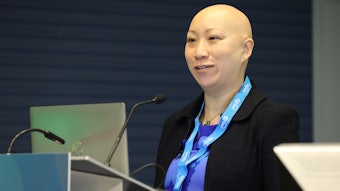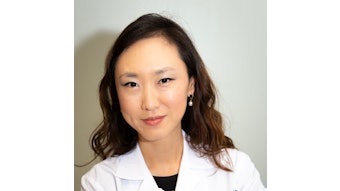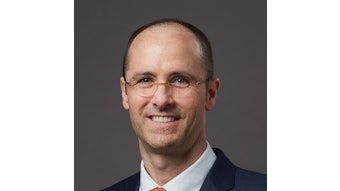A glimpse into dermatology’s bright future
Panelists spotlight what’s new and emerging.

F001 – Future of Dermatology Symposium
Thursday, July 21 | 1-5 p.m.
You don’t need a crystal ball to know the future is bright for dermatology. A look at recent, groundbreaking scientific developments in dermatologic research and its application to clinical practice were among the topics of discussion regarding dermatology’s future during Thursday’s session, F001 – Future of Dermatology Symposium.
Session co-directors Hensin Tsao, MD, PhD, FAAD, director of the Melanoma and Pigmented Lesion Center, the melanoma genetics program and the department of dermatology at Massachusetts General Hospital in Boston; April W. Armstrong, MD, MPH, FAAD, associate dean of clinical research at Keck School of Medicine at the University of Southern California in Los Angeles; and Sandy Sharon Tsao, MD, FAAD, a dermatologist at Massachusetts General Hospital in Boston, led an impressive panel discussion of dermatologic promise. Among the panel of experts was Aaron S. Farberg, MD, FAAD, a dermatologic surgeon at Baylor University Medical Center in Dallas, who discussed a prognostic test proving successful in the treatment of cutaneous melanoma patients.
“Current staging systems for cutaneous melanoma have inherent limitations, and we should best understand our patients’ individual risk to drive our management. This is personalized medicine,” Dr. Farberg said.
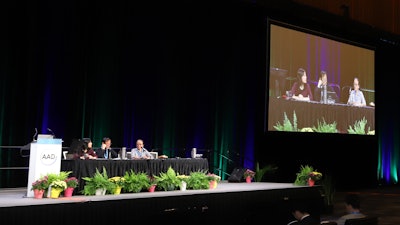
Bring on the cold
New York City dermatologist Peter C. Friedman, MD, PhD, FAAD, detailed current achievements and new trends in clinical dermatologic cold plasma research. According to Dr. Friedman, cold plasma’s “future promise of exciting, emerging technology” has applications in dermatologic wound healing and is now licensed in Germany to be used in the treatment of chronic wounds.
“While the pathogenesis of chronic wounds is complex, the presence of bacteria does play a role. Plasma has a well-documented inhibitory effect on bacteria, and this is what initially led to the idea of using cold plasma to reduce bacterial load of wounds and thus facilitate healing,” Dr. Friedman said.
Similarly, cold plasma has shown promise in the treatment of other dermatologic conditions, he said, including actinic keratoses, viral warts, hair loss, and multiple others.
The good news is that cold plasma has a variety of effects on living tissues and medical treatment applications. According to Dr. Friedman, cold plasma is affordable to create at room temperature and under atmospheric pressure, making it ideal to be applied to the surface of the skin without discomfort, pain, or known harmful effects.
Dr. Friedman and his team pioneered the use of cold plasma to treat actinic keratosis, followed by other research teams worldwide. Dr. Friedman presented the first cases of using cold plasma to successfully treat early skin cancers, in situ squamous cell carcinomas.
“Plasma medicine is just taking its first baby steps, but it shows promise for the treatment of various skin diseases,” he said. “Extensive laboratory research and recent proof-of-concept clinical trials raise the hope that plasma may be the answer to some of the most stubborn problems in dermatology by destroying hard-to-treat bacteria or fungi, causing selective cell death in malignancies, and inducing tissue regeneration.”
Visit AAD DermWorld Meeting News Central for more articles.
